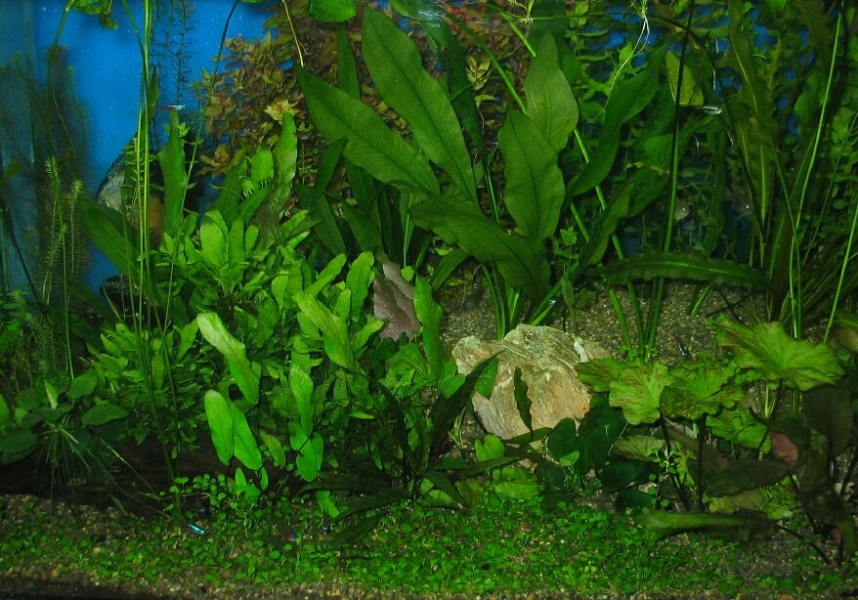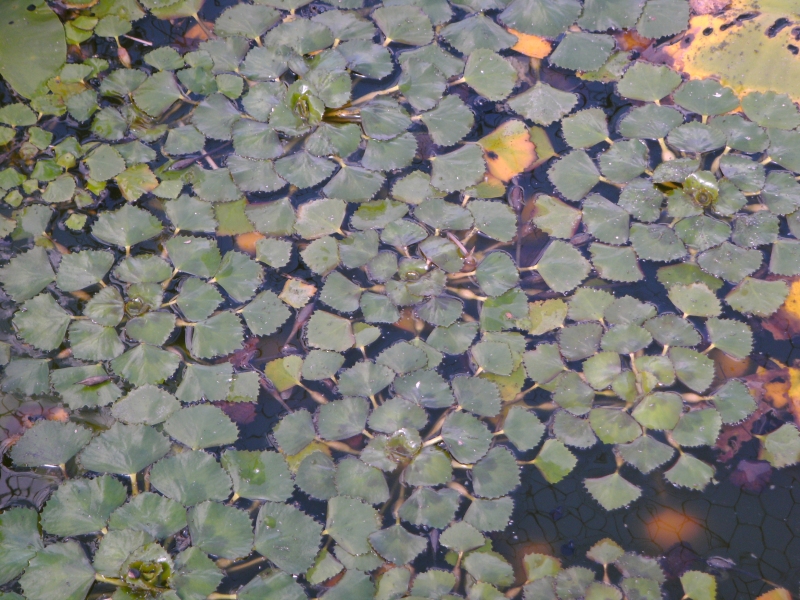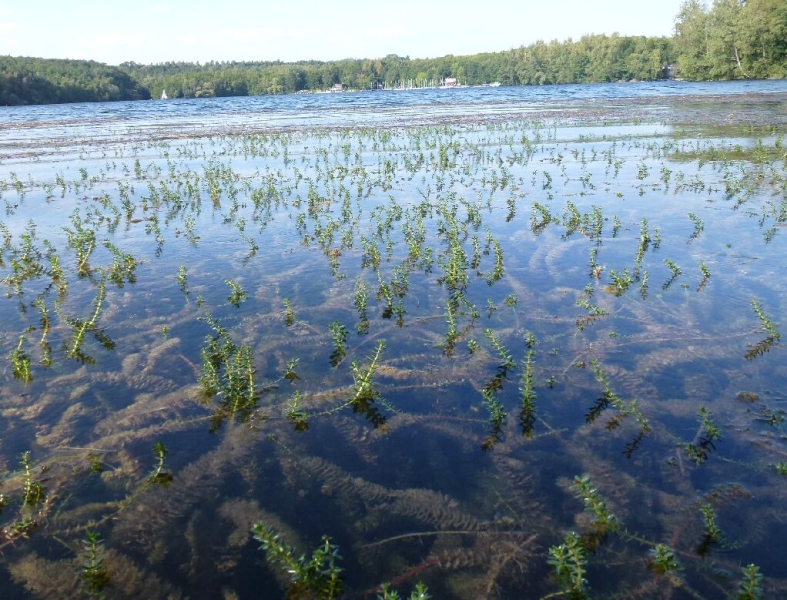A significant threat to the biosecurity of New Zealand's freshwater habitats comes from plants that have been intentionally introduced.
The problem
Over 70 freshwater aquatic plants introduced into New Zealand have now established themselves here outside of cultivation (or 'naturalised'). Many have become problem weeds, with most New Zealand lakes, rivers and streams affected by at least one of these species. The impacts of this are significant, including economic losses and the reduction of indigenous biodiversity.
Over 75% of these weeds were deliberately introduced as plants suitable for the aquarium or ornamental pond trade, with several other species also deliberately introduced as fodder or culinary plants. The deliberate nature of introductions is probably not surprising given the geographic isolation of New Zealand and the barriers to accidental or natural spread of freshwater plants.
As the aquarium or ornamental pond trade has served as the source of such weeds in the past, it's reasonable to assume that there may be other potential weeds still out there waiting to naturalise. A NIWA survey of aquatic plants (see 'Border control for potential aquatic weeds: Stage 2. Weed risk assessment' below) within the aquarium and nursery trade carried out in 1999/2000 discovered over 180 aquatic plants that have not yet naturalised in New Zealand. The majority of these are tropical species that are unlikely to survive unaided in our climate, however 73 of these species are considered to be weeds in other countries and many of these would be potential weeds in New Zealand.
The solution
NIWA has developed the Aquatic Weed Risk Assessment Model (AWRAM) to assess the potential weed risk of aquatic plants. The key variables evaluated in the model are:
- invasiveness, or the ability for a plant to establish itself and displace other plants
- potential geographic distribution
- extent of potential impacts.
Invasiveness
Invasive attributes include:
- habitat versatility (tolerance of ranges of temperature, salinity, substrate, flow and water depth)
- competitive ability compared with other species
- effective dispersal, measured as a combination of reproductive output and mechanisms of spread.
Potential distribution
Potential distribution depends on the availability of suitable habitat, and how much habitat has already been invaded by that plant.
Potential impacts
Impacts include:
- damage to natural ecosystems
- changes to natural biodiversity
- obstruction of water uses
- response to management.
Links to reports/papers
Border control for potential aquatic weeds: Stage 1. Weed risk model (PDF 294 KB) Border control for potential aquatic weeds: Stage 2. Weed risk assessment (PDF 343 KB) Border control for potential aquatic weeds: Stage 3. Weed risk management (PDF 451 KB)
The results
Application in New Zealand
This model provides a robust and scientifically defensible decision support tool for managers.
The Ministry for Primary Industries (formerly MAF) has used the results obtained for various invasive aquatic plants using the AWRAM in its process to decide which species are managed under the Biosecurity Act. These include:
- determining species prohibited from entering into New Zealand, with eleven species not known to be present in New Zealand classified as Notifiable Organisms.
- determining species that are managed nationally in eradication programmes under the National Interest Pests Response (NIPR) programme, with six aquatic species being managed in this way.
- banning the propagation, sale and distribution of high risk ornamental pond and aquarium plants under the National Pest Plant Accord (NPPA), with 30 aquatic plants currently being managed this way.
More information on Notifiable Organisms
National Interest Pests Response (NIPR)
National Pest Plant Accord (NPPA)
These management actions help New Zealand's biosecurity system by keeping risks offshore, preventing future impacts of high risk species and reducing the volume of plant propagules (parts of plants which can make more of the same plant, such as a cutting or seed) being spread around New Zealand.
Application in other countries
The model has been used in Australia and Micronesia to determine which species should be banned from sale and which should be prioritised for other management (which could include targeting for eradication, control or exclusion from high value areas).
Links to reports/papers
Petroeschevsky A.; Champion, P.D. (2008). Preventing further introduction and spread of aquatic weeds through the ornamental plant trade. 16th Australian Weed Conference, Cairns. 200-302.
Invasive Aquatic Weeds in Micronesia
Recently, the accuracy of the AWRAM has been tested and validated for the US through the independent ranking of known invasive and non-invasive species. More than 120 species were tested and divided into major invaders, minor invaders and non-invaders, and the system had 91% overall accuracy. Using this approach the model correctly identifies major invaders 85% of the time, and non-invaders 98% of the time.
Future Directions
The AWRAM has now been verified as an accurate means of detecting which aquatic plants are high-impact and invasive, and which are non-invasive. This will allow it to be used as a tool for prioritising weed management internationally.
The regulation of the dispersal of aquatic plants via the ornamental pond and aquarium trade has either been undertaken or is being investigated as a potential tool to manage invasive weeds in a number of countries, with AWRAM likely to be a critical tool to justify these actions.
Hussner, A. (2012). Alien aquatic plant species in European countries. Weed Research 52: 297–306.
The international trade of aquatic plants continues to expand, with at least 20 new plants being evaluated and potentially introduced to the trade annually. To compound this, many of these plants have yet to be formally described as species.






